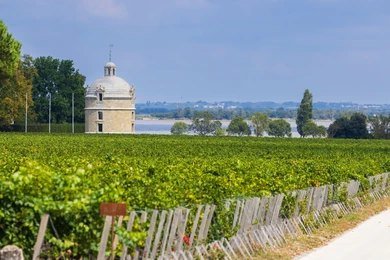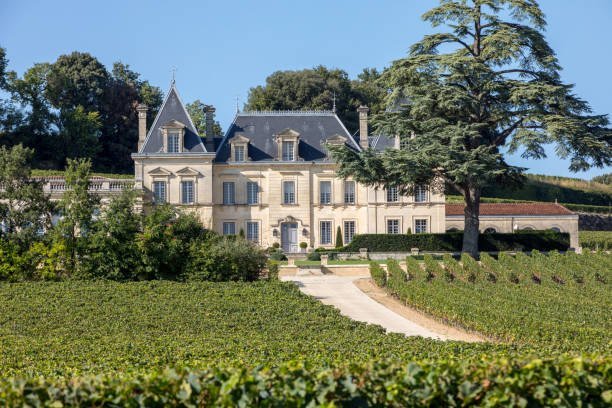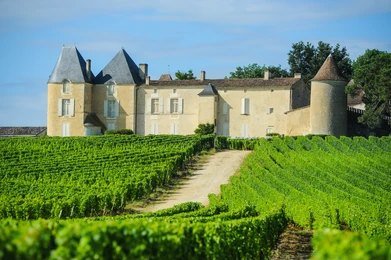A Wine Lover’s Guide to Bordeaux: Must-Visit Châteaux and Tasting Tips
- Prabhdeep Saluja
- May 20, 2025
Table of Content
Recent Blogs
- Attractions
- Bali
- Bali Explore Travel
- Bali Explore Travel Travel guide
- Beaches
- Bordeaux
- Candi dasa
- Canggu
- Explore
- France
- France Explore Travel
- India
- japan
- Kuta
- Lyon
- Natural Wonders
- Paris
- Rouen
- Seminyak
- Temples
- Travel
- Travel Guide
- Ubud
- Waterfalls
Bordeaux is a dream destination for every wine lover. The world-class wineries have been producing wine for centuries. The smell of wood barrels and ripe grapes flows in the air as you stroll through its sloping fields. The châteaus here provide more than tasting. They create an atmosphere that makes the experience better and shows you the work that goes into each bottle.
Every sip lets you enjoy both classic and modern flavors. The bright red wines from Médoc and the nice white wines from Graves are both wonderful. In Bordeaux, there is more than just wine to enjoy. When you go to a farm, it’s natural to feel like every drink you have is a nice time to relax.
A Brief History of Bordeaux Wine
Bordeaux has been producing wine since Roman times, when the earliest vines were cultivated along the Garonne River. By the Middle Ages, Bordeaux was a bustling center of the wine trade. Barrels were sent to England and other places as well. Since the region was near the sea, its wines could be sent to foreign markets. This popularized the place as the wine capital of the world.
Napoleon III ordered the 1855 classification of the best châteaux and established a benchmark for quality. It was a turning point. As its commitment to quality evolved over time, Bordeaux became home to some of the world’s most desirable wines. Its labels continue to define greatness today, as they perfectly blend traditional methods with new, cutting-edge ideas.
You can see how long Bordeaux has been making wine when you walk through old farms with rooms that are hundreds of years old, filled with aged wines.
Understanding Bordeaux Wine Regions
Bordeaux’s vines are split into two distinct wine regions by the Gironde Estuary, called the Left Bank and the Right Bank. This area is known for its gravelly soil, producing dense, tannic wines based largely on Cabernet Sauvignon. Popular wine regions such as Pauillac and Margaux produce powerful, structured reds that improve over time.
On the Right Bank, it is clay and limestone soils that primarily yield Merlot-based wines. What distinguishes Pomerol and Saint-Émilion is that they generally have fruitier flavors and richer, creamier textures. In addition to these, locations such as Sauternes produce sweet wines, while Entre-Deux-Mers is known for its crisp whites.
Every place shows Bordeaux’s soil in distinct ways, so going to a farm can be like a fun trip to learn about how wine is made.
Must-Visit Châteaux
Château Margaux (Left Bank—Médoc)

Château Margaux is a symbol of class and beauty. Some of the most sought-after wines in Bordeaux come from this estate. From its wide neoclassical front and well-kept wineries, it makes for an amazing visit. It’s located on the Left Bank in the Médoc, where the sandy soil is perfect for Cabernet Sauvignon. Wines from this area are known for their structure, richness, and longevity.
A walk around the château reveals centuries of experience in winemaking. Drinking a glass of Château Margaux is a unique experience. It uncovers layers of blackberry, violet, and smooth tannins that are really worth it.
You can even observe the hard work that goes into producing each vintage wine as you walk through the farm and smell the wood barrels. Château Margaux is a can’t-miss for anyone interested in Bordeaux wines.
Château Latour (Rive gauche—Pauillac)

Some of the strongest and longest-lived wines of Bordeaux come from Château Latour. It is located in Pauillac on the Left Bank, and its deep, gravelly soils are good for growing Cabernet Sauvignon. This creates wines with great depth, structure, and aging potential. The estate has a famous round tower that stands tall above the trees. It shows its interesting history that goes back to the 1400s.
Head to Château Latour to see a special way of making wine that focuses on quality and precision. Its basements have vintage wines that get better with time. Every sip brings out the flavors of dark fruit, tobacco, and earth. When you walk through the fields, you can really feel the strong taste of Château Latour’s wines.
Château Haut-Brion (Graves)
Château Haut-Brion is the only First Growth wine of Bordeaux that is not located in the Médoc. It is one of the oldest wine farms in France. Since the 1600s, they have been producing superb wines. Thanks to the gravelly soils and unique climate, its wines achieve a remarkable balance between power and finesse.
Unlike many wineries on the Left Bank, the Haut-Brion estate uses ample Merlot, which lends a softer and more velvety texture to its wines.
The cellars of this château hold aging barrels of wines with bold flavors of blackcurrant, tobacco, and earthiness. Tasting its wines is pleasing, and each glass tells a tale of skill and tradition. Just walking around the place, you can definitely feel the history and effort that go into making every bottle.
Château Cheval Blanc (Right Bank—Saint-Émilion)

Château Cheval Blanc is a unique property in Saint-Émilion that produces very fine wines on the Right Bank of Bordeaux. This estate differs from others in the area as it combines Merlot and Cabernet Franc. This results in wines that are smooth, have nice aromas, and age well.
The château is a new winery that fits well with its long history. Its flavor offers different levels of sweet red fruit, flowery aromas, and a smooth finish that stays in your mouth.
Château d’Yeuem (Sauternes)

Château d’Yquem is the best region for producing Sauternes wine and making the most well-known sweet wines in the world. The morning fog from the Ciron and Garonne rivers covers the vineyards, which are ideal for a special type of rot that makes the grapes sweeter and tastier. This natural way creates wines that are wonderfully balanced between sweet, sour, and enjoyable flavors.
This estate is ideal to see how they carefully turn Semillon and Sauvignon Blanc into something really special. Both wines have flavors of honey, apricot, citrus, and spice that improve with time. The castle itself is very nice; the wide view over the grape fields makes it more magical.
The Bordeaux Wine Tasting Experience
Wine tasting in Bordeaux is not simply about drinking—it’s about exploring different flavors, craftsmanship, and the place of origin. Every visit to a château is a new story, from sprawling estates with centuries-old traditions to small family-run vineyards where you can taste wine up close. When you drink and swirl a glass of a nice Cabernet from Pauillac and enjoy the smooth feel of a Merlot from nearby Saint-Émilion, you can really see how special Bordeaux’s wines are.
One special moment for me was being in a dark tasting room and the sommelier pouring a nice Sauternes wine. The yellow drink enveloped the glass, scents of honey and orange arising from it, unlike the strong red drinks sampled earlier. It tasted even better with some soft blue cheese. Every flavor, whether from the Left Bank or the Right Bank, lets you feel the real taste of Bordeaux.
Things to Do in Bordeaux (Other than Vineyards)
Bordeaux Place is more than just great wine. There are a lot of tourists who come to see its grand buildings, busy market, and beautiful riverbank.
As the sun goes down, a beautiful golden light shines on the Miroir d’Eau. This light looks amazing when you are walking around the Place de la Bourse.
In the Saint-Pierre neighborhood, the narrow streets lead up to small cafés where you can enjoy local wine with oysters from the Bay of Arcachon.
At La Cité du Vin, you can learn about wine from different parts of the world. It has displays that you can interact with and a tasting room with a view of the Garonne River.
On the walking street by the river, there are some street bands adding to the fun and lively mood. There is more to enjoy here than just the farms. There are times that are just as special as the drinks.
Final Words
Bordeaux’s history, skill, and know-how can be felt in every drink. With each visit, there’s a lot to learn and love about the region’s wine, whether it’s exploring the famous chateaux along the Left Bank or the beautiful vineyards of Saint-Émilion.
Apart from the wineries, the city is quite the attraction thanks to its lively streets full of food adventures and beautiful waterways. It’s great to sit in the corner of a local wine shop and enjoy a good bottle of old vintage wine while looking out at the beautiful hills covered with grapevines.
Bordeaux is more than just wine; it’s also about the fun, company, and memories that make every visit memorable.
The journey is the destination, and every blog post is a milestone.
Every adventure begins with a step, and every blog post marks a memory. Join us as we explore the world, one destination, and story at a time.



